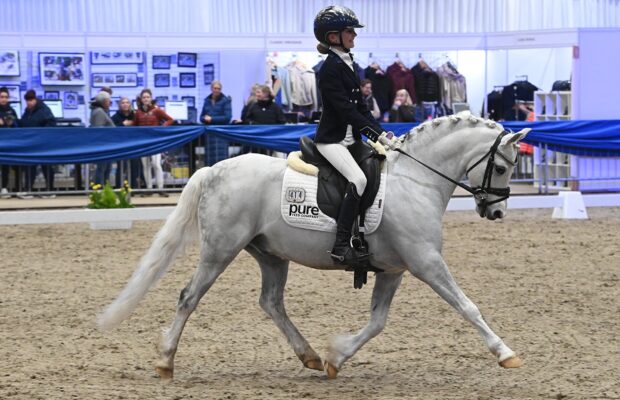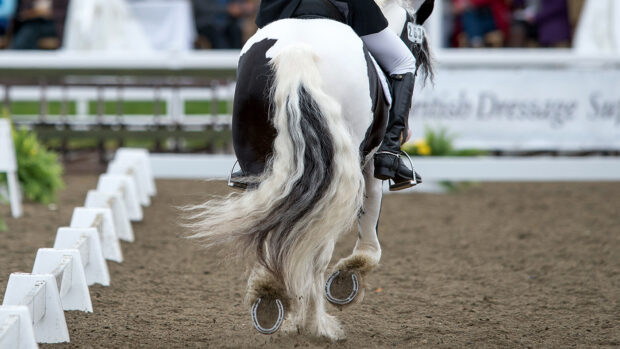Australian dressage rider Lyndal Oatley provides tips for nailing this advanced move
Based in Germany, Lyndal is one of Australia’s leading dressage riders. She was the highest-placed Australian competitor on the late Sandro Boy at the 2012 London and 2016 Rio Olympics. She is married to fellow Olympian Patrik Kittel.
Training the stars
Sandro Boy was a gifted horse gymnastically. The half-pass became his strength with time, training and use of basic exercises. It became the movement people remember best about him.
Encouraging freedom and expression in a half-pass can transform it into a test highlight. Here are some exercises I use to improve the movement.
Tackling the issue
1. Riders often focus on the position of the shoulders and whether the hindlegs are trailing or leading, but suppleness through the ribcage is also instrumental in developing increased expression in a half-pass. An easy exercise to help this is to ride up the long side starting in shoulder-in, then switch to travers, back to shoulder-in, then back to travers. With each change in exercise, think about yielding your horse off the inside leg. It should feel as though you are shortening the distance between the horse’s hip and the shoulder around your inside leg.
2. Check how you are sitting in the saddle. Sometimes we inhibit expression by how we use our bodies. Make sure your body is turned slightly in the direction you are heading. Don’t use your hips to shunt your horse across. Instead, think about having your inside hip bone slightly lower than your outside one, and your outside hip slightly forward.
3. Flirt with power and collection. Simply encouraging the horse forward within the half-pass followed by a few steps of collection can make a world of difference. When your horse responds to your half-halt asking him to collect, reward him by allowing him to go forward again.
Continued below…

#SundaySchool: perfecting pirouettes with Rebecca Hughes
The international dressage rider and young horse producer explains how walk pirouettes can improve engagement for medium trot

Subscribe to Horse & Hound magazine today – and enjoy unlimited website access all year round
Consider this…
- Start your half-pass with a few steps of shoulder-fore.
- Extra flexion doesn’t come from bending the horse more in the direction of the half-pass. Remember to keep a connection on the outside rein.
- Increased expression comes from the inside shoulder’s ability to move freely. Be careful not to block with the inside rein by fixing it at the withers or by taking your hand across the neck. Aim for a soft, constant rein contact and position your hand slightly in off the withers.
- Less is more. Don’t do half-pass after half-pass. Focus on these exercises instead.
- Make learning a positive experience. Your horse’s happiness and soundness are paramount.
Would you like to read Horse & Hound’s independent journalism without any adverts? Join Horse & Hound Plus today and you can read all articles on HorseandHound.co.uk completely ad-free




